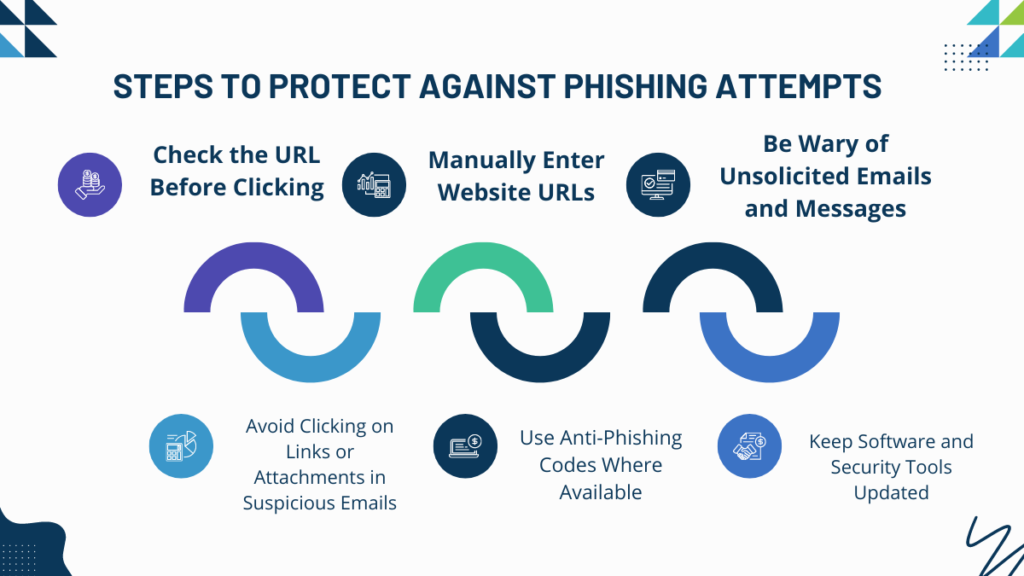To use cryptocurrencies securely, you must know key security practices. These include creating strong, unique passwords and using two-factor authentication. This guide will cover these key practices. It will also give advice on hardware wallets and phishing protection. This will help newcomers safeguard their digital assets.
Strong Passwords and Two-Factor Authentication for Crypto Security
The first line of defense against unauthorized access is a secure password coupled with 2FA. These simple, effective measures can greatly reduce hacking and data breach risks. They will protect your digital assets.
Creating Strong and Unique Passwords
Strong passwords form the foundation of your crypto security. A strong password is one that’s difficult to guess or crack through brute force attacks. Here’s how to create and manage secure passwords:
Tips for Crafting Secure Passwords:
- Use at least 12 characters. To make the password complex, Include a mix of numbers, symbols, and uppercase and lowercase letters.
- Avoid common phrases or personal info. Don’t use easily guessable data like birthdays, pet names, or dictionary words.
- Use a password manager. Tools like LastPass or Bitwarden can store and manage your passwords securely. They let you avoid reusing passwords across platforms.
Password Management:
- Create passwords with at least 12 characters.
- Avoid reusing passwords across different platforms.
- Regularly update your passwords, especially after security alerts.
- Use a password manager to store complex passwords safely.
Enabling Two-Factor Authentication (2FA)
Two-factor authentication (2FA) adds a vital second layer of security. It requires a second form of verification beyond just a password. With 2FA, even if someone gets hold of your password, they would still need access to your mobile device or security token to log in.
Benefits of Enabling 2FA:
- Prevents unauthorized access: 2FA requires something you have, like a mobile device, in addition to your password. This makes it much harder for hackers to break into your accounts.
- Reduces fraud: 2FA is effective. It lowers crypto theft and unauthorized access.
How to Enable 2FA:

- Download an Authenticator App: Download a trusted app such as Google Authenticator or Authy.
- Access Security Settings: Navigate to the security settings on your crypto exchange or wallet.
- Enable Two-Factor Authentication (2FA): Select the option to enable 2FA in the security settings.
- Scan the QR Code: Use your authenticator app to scan the QR code provided by the platform.
- Backup Recovery Codes: Save your recovery codes to ensure access if you lose your device.
Protecting Your Crypto with Hardware Wallets
For those serious about long-term crypto security, hardware wallets are a must. They store private keys offline. This blocks all online hacks. Your digital assets are safe from phishing, malware, and unauthorized access.
How Hardware Wallets Work
Hardware wallets are physical devices designed to keep your private keys secure by storing them offline. They operate by signing transactions within the device itself, ensuring your private keys never leave the wallet. Here’s how they work:
- Offline Storage: A hardware wallet connects to your computer or mobile device via USB or Bluetooth but keeps your private keys isolated. The transaction data is sent to the hardware wallet, where it’s signed by the private key. This signed transaction is then uploaded back through the connection to complete the process without exposing your private key.
- High Security: These wallets are very secure. They aren’t online, so they’re immune to malware and phishing attempts that target software wallets. This makes them the “gold standard” for crypto storage, especially for large holdings.
Best Practices for Managing Private Keys
Managing private keys effectively is crucial when using hardware wallets. The following best practices will ensure that your assets remain secure:
- Never Share Your Private Keys: Your private key is what grants access to your cryptocurrency. Never share it with anyone or store it online.
- Store Keys Offline: Use your hardware wallet to store your private keys offline. Ensure your recovery phrase (or seed phrase) is also kept in a secure, offline location, such as a fireproof and waterproof safe.
- Use Multiple Backups: Create multiple backups of your recovery phrase. Store them in different places. This way, you can still recover your funds if your hardware wallet is lost, stolen, or damaged.
Private Key Management:
- Store your recovery phrase securely offline.
- Use a strong, unique PIN for your hardware wallet.
- Regularly update your wallet’s firmware to ensure it has the latest security features.
- Double-check recipient addresses before sending any funds.
Recognizing and Avoiding Phishing Scams
Phishing remains one of the most prevalent threats in the crypto space. Scammers often impersonate legitimate platforms to steal personal information, such as private keys or login credentials. With vigilance and understanding of their tactics, you can protect your assets from falling into the wrong hands.
Common Phishing Tactics in Crypto
Phishing scams in crypto use various tricks to steal users’ data. Here are the most common phishing techniques employed by scammers:
- Fake Websites: Scammers often create replica websites mimicking legitimate crypto exchanges or wallet providers. These websites lure users into entering login credentials or private keys, which scammers then use to drain their wallets.
- Email Phishing: Fraudulent emails are another common tool used by scammers. These emails may look like they’re from trusted platforms, asking users to verify their accounts or reset passwords through links that direct them to fake websites.
- Social Media Scams: On platforms like X (formerly Twitter) and Facebook, scammers use fake profiles to impersonate well-known figures or companies, promoting giveaways or investment opportunities that require users to transfer crypto under the guise of high returns.
| Phishing Tactic | Description | Example |
|---|---|---|
| Fake Websites | Scammers create fake replicas of crypto platforms, tricking users into providing sensitive information. | A fake Coinbase website asks users to “reverify” their accounts, stealing their login credentials. |
| Email Phishing | Fraudulent emails posing as legitimate companies to gain personal details. | An email claims to be from Binance, asking for account verification with a link to a phishing site. |
| Social Media Scams | Fake accounts on platforms that promote fraudulent giveaways or investments. | A fake Elon Musk account promotes a giveaway scam on X, asking followers to send crypto to participate. |
Steps to Protect Against Phishing Attempts

Recognizing and avoiding phishing attempts is critical in safeguarding your crypto assets. Here are practical steps to protect yourself:
- Check the URL Before Clicking
Always inspect the URL of any website or link before clicking on it. Phishing sites often use URLs that look very similar to legitimate ones but may have slight variations. - Manually Enter Website URLs
Instead of clicking on links, manually type the URL of websites into your browser. This ensures you are visiting the correct site and not being redirected to a phishing site. - Be Wary of Unsolicited Emails and Messages
Do not open emails or messages from unknown sources. This is especially true for those with urgent language or offers that seem too good to be true. These are common phishing tactics. - Avoid Clicking on Links or Attachments in Suspicious Emails
Even if an email seems somewhat familiar, avoid clicking on links or attachments unless you are certain of its authenticity. Instead, visit the website directly through your browser. - Use Anti-Phishing Codes Where Available
Many platforms, such as Binance, offer anti-phishing codes. These codes help you verify the authenticity of emails sent by the platform. Make sure to enable and check this feature whenever possible. - Keep Software and Security Tools Updated
Ensure that your browser, operating system, and antivirus software are up to date. Regular updates help protect against vulnerabilities that phishing attackers might exploit.
Phishing Protection:
- Double-check website URLs.
- Avoid clicking on unsolicited emails or links.
- Enable anti-phishing codes on supported platforms.
- Be cautious with offers that sound too good to be true.
Importance of Regular Software Updates for Crypto Security
Regular updates to your wallet software are critical. They patch security loopholes and reduce the risk of hackers exploiting them. With new cyber threats emerging daily, it’s essential to keep your wallet and device software updated to safeguard your digital assets.
Why You Need to Regularly Update Your Wallet Software
Outdated wallet software can expose you to security risks. Hackers are always looking for weak spots to exploit. Each software update typically includes essential patches that address known vulnerabilities, reducing the chances of data breaches or wallet hacks. Not updating your wallet is like leaving your front door unlocked while knowing thieves are targeting your neighborhood.
Regular updates close security gaps. They also improve performance and features. This ensures your wallet works well with the latest technology.
How to Set Automatic Updates for Maximum Security
To ensure you never miss critical updates, it’s wise to enable automatic updates on your crypto wallet. Here’s a step-by-step guide to setting this up:
- Open the wallet application and navigate to the settings menu.
- Locate the “Update Preferences” section and enable automatic updates by toggling the switch or checkbox.

- Verify or set a convenient update schedule if available to avoid interruptions and keep your wallet secure with the latest patches.

Note
Updating your software is one of the best ways to secure your crypto. It’s simple and effective.
Managing Crypto Transactions Safely
Whether you’re sending, receiving, or trading crypto, following best practices for secure transactions is essential. Verify transaction details. Use security tools like multi-signature wallets and whitelists. This will ensure your digital assets are transferred safely.
Verifying Transaction Details
One of the best ways to avoid costly mistakes is to double-check transaction details. It’s simple but very effective. Many errors, like sending funds to the wrong wallet, can be avoided by carefully reviewing all details before confirming. Crypto transactions are irreversible, so any error could result in permanent loss of assets.
Steps to Verify Transaction Details:
Verifying transaction details ensures the successful transfer of cryptocurrency. It also lets you track its status on the blockchain.
Step 1: Record Your Transaction ID

After sending your coins from one address (either an exchange or wallet) to another, you will receive a Transaction ID (TxID) from your exchange or wallet. This TxID serves as a unique identifier for your transaction and enables tracking. Be sure to save this TxID.
Step 2: Enter Your Transaction ID on the Blockchain Explorer

Every cryptocurrency has its own blockchain, which can be viewed online. For Bitcoin, transactions can be tracked at blockchain.info. Simply enter your TxID into the search bar located in the top-right corner of the website.
Step 3: Verify Transaction Status and Details

Once you enter the TxID, all the relevant details of your transaction will be displayed. You can verify the transaction’s status and review its details here.
Safeguarding Your Assets During Transactions
To better protect your crypto in transactions, use tools like multi-signature wallets and withdrawal whitelists. These tools add security. They reduce the risk of hacks and unauthorized transactions.
Using Multi-Signature Wallets:
Multi-signature (multi-sig) wallets require more than one private key to authorize transactions. For instance, in a 2-of-3 setup, two out of three signatures are needed to approve a transaction. This makes it much harder for a hacker to access your funds, as they would need control of multiple private keys.
Setting Up Withdrawal Whitelists:
Withdrawal whitelists let you pre-approve specific wallet addresses for withdrawals. This means funds can only go to trusted addresses. It reduces the risk of accidental transfers or malicious withdrawals from hacked accounts.
Safeguarding Transactions:
- Enable multi-signature approvals for large transactions.
- Set up withdrawal whitelists to restrict where funds can be sent.
- Set withdrawal limits to minimize exposure to unauthorized transfers.
Read also
- Setting Up a Crypto Wallet
- Avoiding Cryptocurrency Scams
- The Safest Hardware Wallets in 2024
- Managing Private Keys Securely
- Recognizing and Avoiding Phishing Scams in Crypto
In today’s digital world, it’s vital to secure your crypto. Use strong passwords. Enable two-factor authentication. Update wallet software often. Use tools like multi-signature wallets and whitelists. They defend well against common threats. The key to security is to stay vigilant. Adapt your practices as the crypto space evolves.



















